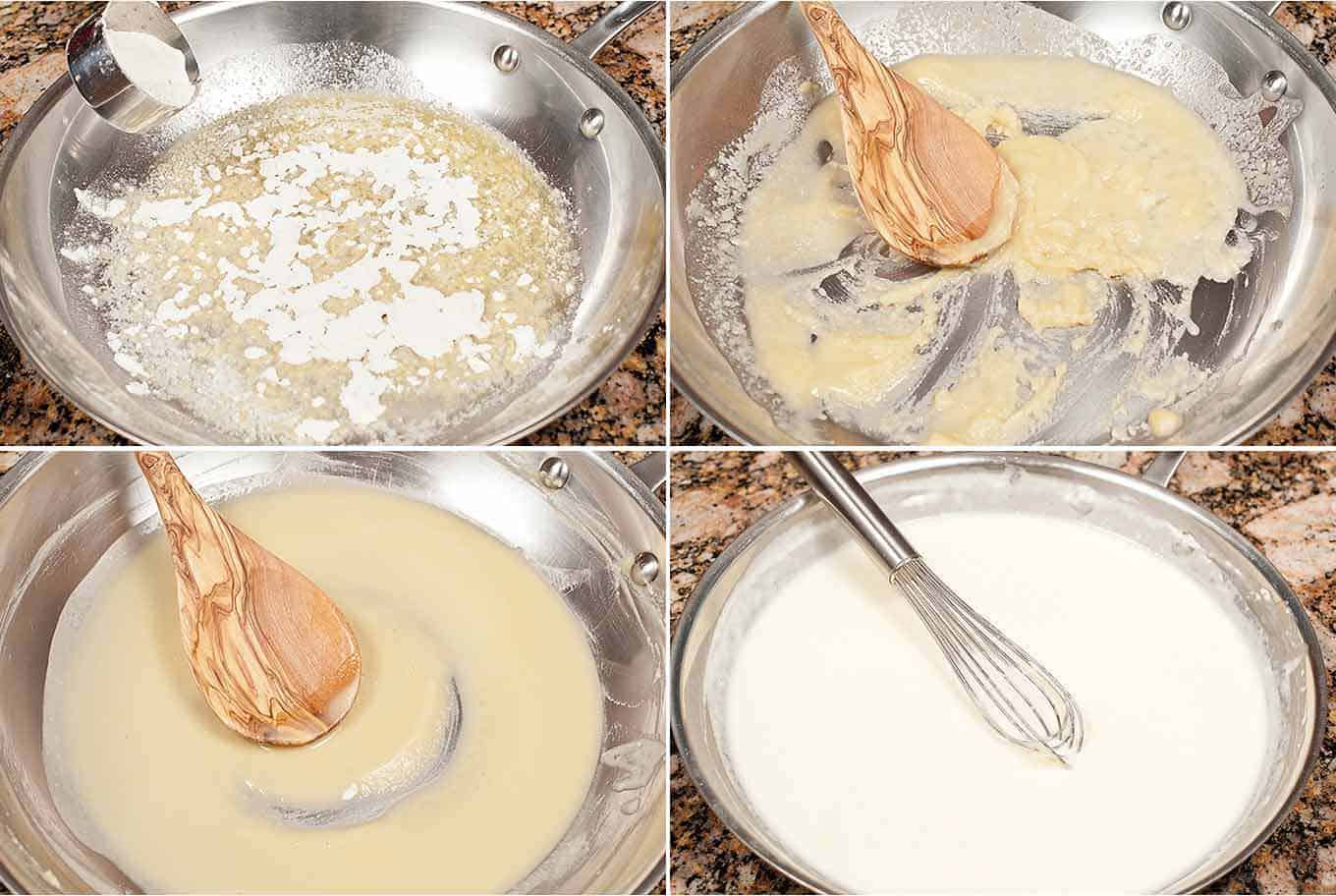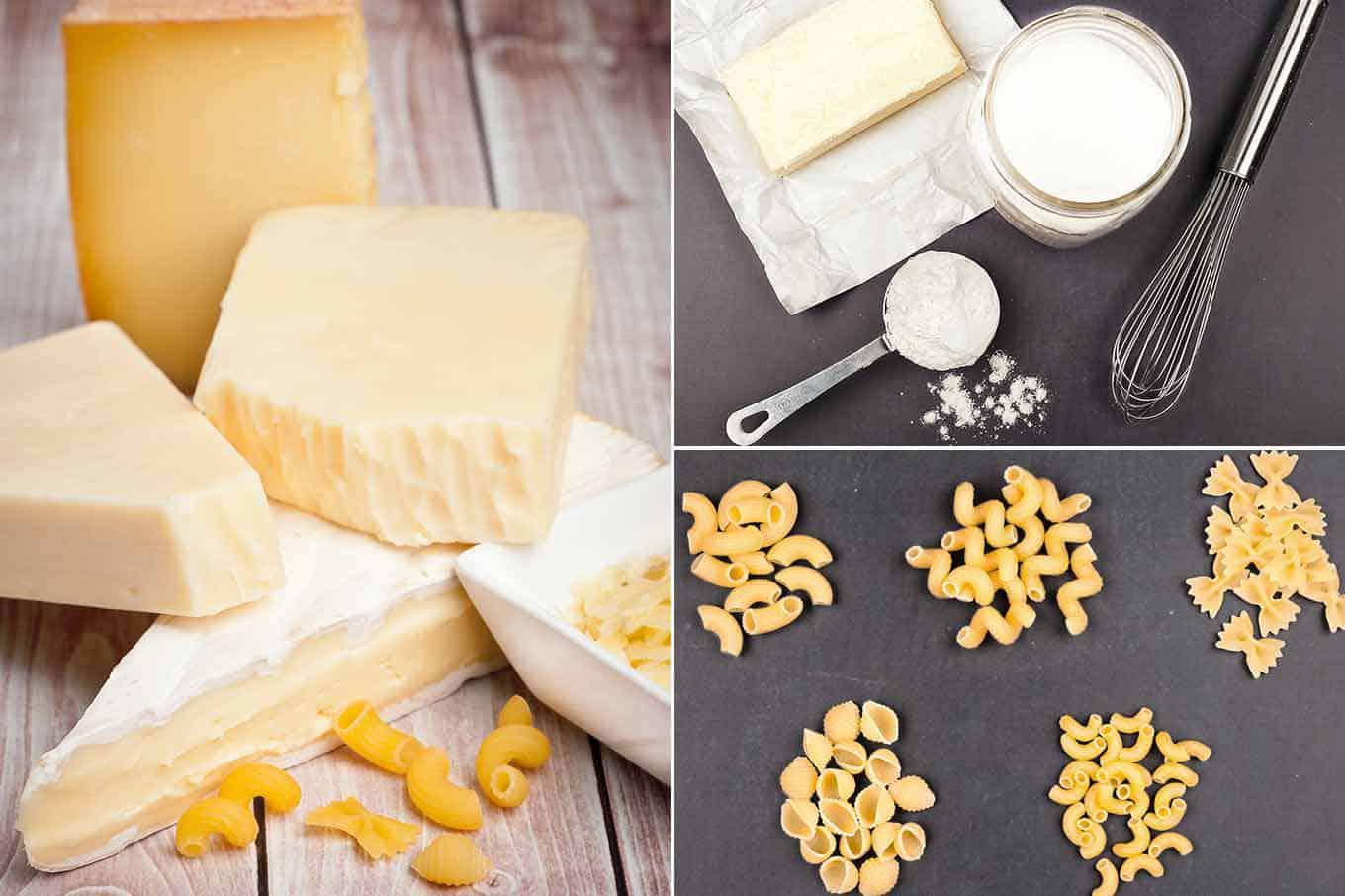How to Make Macaroni and Cheese in a Cup
Learn how to make delicious homemade macaroni and cheese using our fool-proof ingredient ratio and easy step-by-step instructions.

Macaroni and cheese is quintessential comfort food, but if you've only ever had the blue box variety, you're really missing out! Whether stovetop or baked, we've got the formula for getting creamy, delicious results every time.
Read on for tips on choosing the right pasta and cheeses, and get our step-by-step instructions for making the perfect mac and cheese sauce.
Start with béchamel: The secret to a creamy, cheesy sauce
When making macaroni and cheese, this sauce serves as the base and whatever cheeses you choose are melted into it.

Béchamel is one of the "mother sauces" in the classic French system. It's made by cooking equal parts butter and flour until smooth and golden (this is called a roux), then whisking in warm milk to make a smooth, creamy sauce. The thickness of a béchamel sauce is determined by the ratio of milk to butter and flour.
Choosing the ingredients
Making macaroni and cheese from scratch is an easy process that leaves a lot of room for personal taste and creativity.
There are a few basic guidelines you need to follow when choosing your ingredients, but once you know what they are, the sky's the limit on the varieties of cheese and add-ins you can choose from.

Use whole milk and real butter
When making mac and cheese, it doesn't pay to use low-fat ingredients, so enjoy the indulgence and save the calorie counting for another night.
A smooth, creamy cheese sauce with no lumps or separation is much easier to achieve when you use full-fat ingredients. We recommend using a good quality unsalted butter and whole milk to make your béchamel sauce.
Pick a pasta that holds the sauce
Next, you want to choose the right type of pasta. Smaller cuts allow for the most cheese "coverage" and cuts with ridges are particularly nice because they hold the sauce so well.
In addition to the ever-popular elbows, we like pipette (slightly larger elbow-shaped with ridges), cavatappi (small, twisted tubes with ridges), mini farfalle (bow ties or butterflies) and conchiglie (small shell-shaped macaroni with ridges).
Choose smooth-melting cheeses
Of course, the most important ingredient is cheese. You want to choose varieties that melt easily and are not likely to separate.
Our top recommendations (in no particular order) are fontina, Muenster, Gruyère, Gouda, Havarti, mozzarella, Jack, and Cheddar. All of these cheeses should be easy to find in just about any supermarket.
Keep your cheese in the refrigerator until you're ready to grate it, then use small holes on your box grater. This will give you fine shreds that melt quickly and help produce a smooth, creamy sauce.
Add a toasty crumb topping
Last but not least, if you're making a baked version of macaroni and cheese, you'll want a toasty crumb topping. Fresh breadcrumbs, coarsely chopped and toasted are the best choice, but store-bought panko will work nicely too.
Baked mac and cheese vs. stovetop
While a casserole of nicely browned, baked macaroni and cheese may be more traditional, some cheese combinations simply taste better when served straight out of the saucepan without ever visiting the oven.
As a general rule of thumb, macaroni and cheese recipes that incorporate semi-soft cheeses like fontina, Gruyère and Gouda can be baked with consistently delicious results. Here are a few examples of baked macaroni and cheese recipes and the cheese varieties we've chosen for each.
- Classic Baked – This is a traditionally flavored version made with sharp cheddar and creamy Muenster cheese.
- Goat Cheese and Sun-Dried Tomato – Pictured in this post, this recipe is made with fontina, chèvre (goat cheese), bits of sun-dried tomatoes, and a crispy crumb topping.
- French-Inspired – This recipe is made with three fabulous varieties of French cheese: Ossau-Iraty (sheep's milk cheese), chèvre (soft goat cheese), and Mimolette (aged cow's milk cheese).
- Baked Truffle – Made with a combination of fontina and fresh mozzarella cheese, sautéed mushrooms, and white truffle oil, this recipe is one of our all-time favorites.
Recipes that include soft, velvety cheeses like Brie and mascarpone are at their creamy best when served stovetop style. Here's a couple for you to try.
- Creamy Stovetop – Made with a mild combination of fontina and cottage cheese, this super creamy rendition is a favorite for kids.
- Stovetop Lobster – This recipe uses mascarpone and Gruyère cheese, chunks of lobster, and fresh chives to make a decadent treat that we reserve for special occasions.
Regardless of the recipe you make or the cheeses you choose, all homemade macaroni and cheese recipes start with the same ingredients (the béchamel) and use the same cooking techniques. Here's our basic recipe:
- 1 lb pasta
- 4 tablespoons butter
- 4 tablespoons flour
- 3-3/4 cups whole milk
- 12 to 14 ounces of cheese, up to 4 varieties, finely shredded
-
Prepare a roux: The first step in making macaroni and cheese from scratch is to make the roux for your béchamel sauce. A roux is a mixture of equal parts flour and fat that is used to thicken sauces, soups, and stews. For macaroni and cheese, we use butter as the fat component and make a light-colored (blond) roux.
-
Whisk in the milk: When the roux has reached the right color and consistency, whisk in some warm milk and continue cooking until the sauce is smooth and creamy, and thick enough to coat the back of a spoon.
-
Add the cheese: When the béchamel sauce has reached the right thickness, it's time to stir in your grated cheese.
-
Add the pasta: Once all the cheese has melted and the sauce is smooth and creamy, it's ready for the pasta and any other ingredients you might be adding.
-
Bake or serve: Baked mac and cheese needs a little time in the oven before serving., but if your recipe is for a stovetop mac and cheese, you can serve right away.
Course: Pasta
Cuisine: American
Calories: 399 kcal , Carbohydrates: 28 g , Protein: 18 g , Fat: 24 g , Saturated Fat: 14 g , Polyunsaturated Fat: 8 g , Cholesterol: 70 mg , Sodium: 362 mg , Fiber: 1 g , Sugar: 1 g
Snap a photo and tag @gourmetconnect in your posts. We love to see what you've been making!
How to Make Macaroni and Cheese in a Cup
Source: https://www.mygourmetconnection.com/how-to-make-the-best-macaroni-and-cheese/